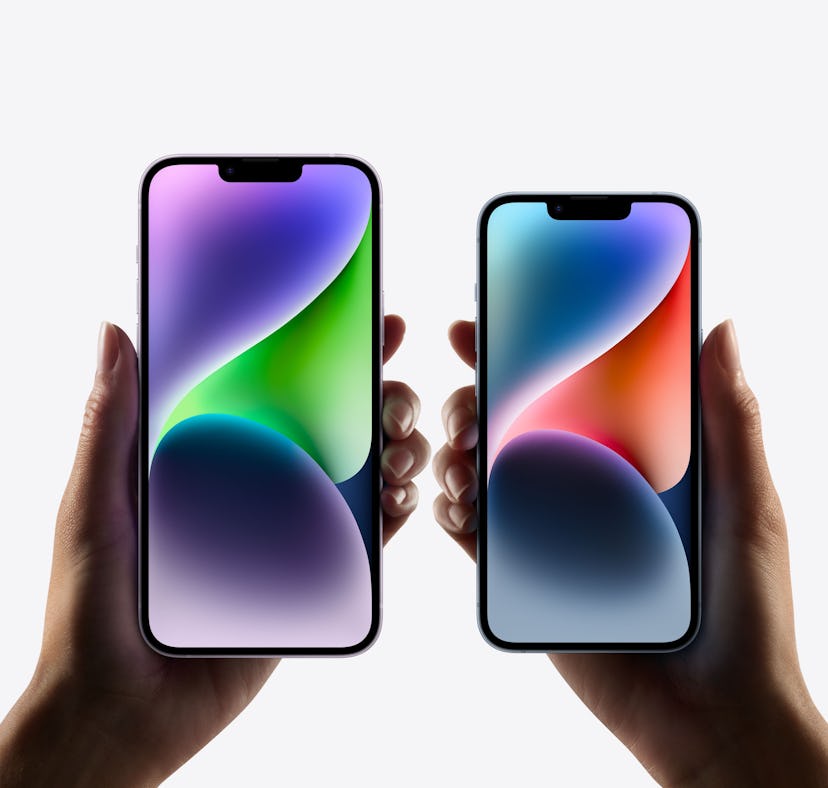
When Will iPhones Have A USB-C Port? 2023 Looks Promising
This is what we call a game-changer.
The iPhone is about to get a major design makeover, and the change is going to make your life so much easier. On Tuesday, Oct. 25, Apple’s Senior Vice President of Worldwide Marketing Greg Joswiak shared the company will have to swap its standard Lightning port for a USB-C port, which means you’ll be able to charge your iPhone with a more universally accepted charger. But when exactly will Apple start making an iPhone with a USB-C port? Since the company rolled out its latest lineup of Apple products in September 2022, you might expect to see the change by the next iPhone release. In fact, some reports are eyeing a 2023 roll-out, so if you’re ready for to make the switch, here’s what you need to know.
Apple users have been begging the company to make the switch to USB-C for years, but the iPhone loyalists aren’t the reason why the company caved. In June 2022, the European Union voted in favor to implement a common charging standard across all electronics, and the law requires all new smartphones and tablets sold within its borders to have a USB-C port by 2024. The EU gave its final approval to the legislation on Oct. 24, which prompted a response from Apple. During the Wall Street Journal's Tech Live event on Oct. 25, Joswiak was asked if Apple would be moving to USB-C, and after a long lead up, the marketing VP responded, “obviously we’ll have to comply, we have no choice.” Given his unenthusiastic response, it doesn’t seem like the company is all that thrilled with the change. Still, it looks like Joswiak is able to see that the law, which will allow users to use a universal charger for iPhones rather than make sure they always have a Lightning cord around, comes from a good place, and even called the EU “well-meaning.”
Sure, the confirmation is exciting and all, but the scoop tech insiders really wanted was to know when the USB-C port will finally be rolled out. Joswiak didn’t share any deets on a date, but based on the 2024 deadline from the legislation, it’s possible the next iPhone series (or at least some phones in the probable iPhone 15 series) could be USB-C compatible.
A May 2022 report from Bloomberg tech reporter Mark Gurman supports this theory — according to Gurman, as of spring 2022, Apple was already testing “future iPhone models” with a USB-C port, and the reporter suggested the first iPhone to come with a USB-C port could be released as early as 2023. Gurman didn’t specify whether the change would be implemented by the iPhone 15, but given that MacRumors reported the new design is being tested with the iPhone 15, it’s safe to bet that the first USB-C capable iPhones with be part of the iPhone 15 series.
Also in May 2022, Apple analyst Ming-Chi Kuo predicted the USB-C port would be rolled out in 2023, tweeting, “it's expected to existing USB-C-related suppliers of Apple's ecosystem (e.g., IC controller, connector) become the market's focus in the next 1-2 years, thanks to vast orders from iPhones and accessories' adoption of USB-C ports.”
Though the switch is imminent, there’s a chance you won’t have to toss your trusty charger in the trash when the time comes. Gurman also reported that Apple was working on an “adapter that would let future iPhones work with accessories designed for the current Lightning connector,” so if you’re not totally sold on the change (or the new iPhone designs), you might not have to compromise too much. During the Oct. 25 WSJ Tech Live event, Joswiak hinted that Apple is conscientious of the impact the switch to USB-C could have on the environment, telling the audience the brand doesn’t want to “cause a bunch of e-waste.”
Because it’s been the standard for Apple devices for so long, you’ve probably gotten pretty used to the Lightning connector, but once the eventual change becomes the norm for Apple devices, you’ll probably forget all about your collection of Lightning port chargers.
This article was originally published on